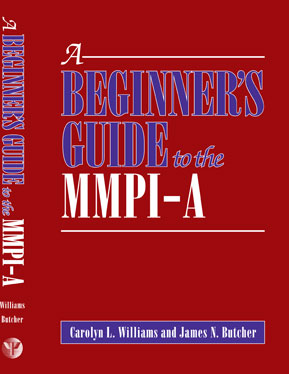
A Beginner's Guide to the MMPI-A
James N. Butcher
MMPI-A Research Reference Base
Aharoni, D. M. (1999). The effectiveness of the MMPI-A in the assessment of adolescent substance abuse (Minnesota Multiphasic Personality Inventory). Dissertations International: Section B: the Sciences & Engineering, 60(6-B), 2932. US: Univ Microfilms International.
Alpern, J. J., Archer, R., & Coates, G. D. (1996). Development and effects of an MMPI-A K correction Journal of Personality Assessment, 67, 155-168.
Archer, R. P. (1997). Future directions for the MMPI-A: research and clinical issues. Journal of Personality Assessment, 68(1), 95-109.
Archer, R. P. (1999). Overview of the Minnesota Multiphasic Personality Inventory-Adolescent (MMPI-A). M. E. Maruish, (Ed), The use of psychological testing for treatment planning and outcomes assessment (2nd ed.), (pp. 341-380).
[Continued...]
International Case Studies on the MMPI-A: An Objective Approach
There is a long history of using personality tests to assess clients in cultures different from the one in which a test was developed. The original MMPI was translated into languages other than English and used in countries outside the United States shortly after it was published in 1943. It rapidly became the most widely used personality measure world-wide (Butcher & Pancheri, 1976). When the MMPI-2, the revision of the original MMPI, was published in 1989, it was adapted for use in many countries (Butcher, 1996). Research has shown it to be an effective instrument for clinical assessment in international settings. Computer-derived interpretive reports for patients in clinical settings in other countries have been found to aptly describe the symptoms and behavior of those tested.
[Continued...]
Download International Case STudies on the MMPI-A: An Objective Approach